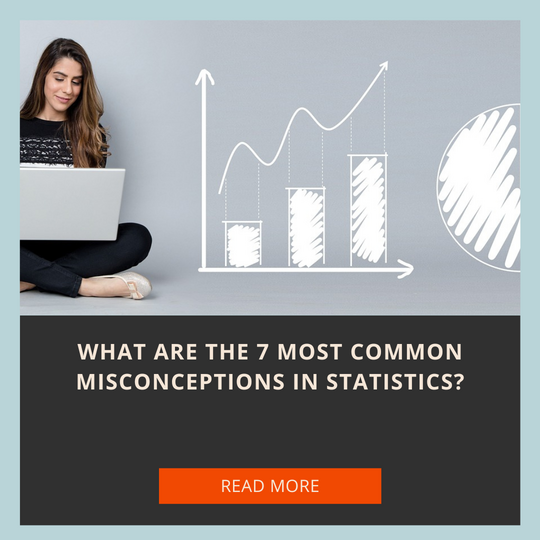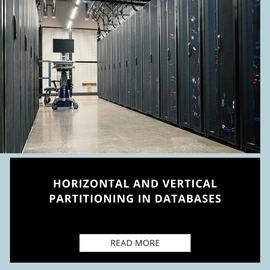Statistics is a crucial tool for understanding the world, making informed decisions, and drawing meaningful conclusions from data. However, it is also rife with misconceptions, often due to oversimplified or misunderstood concepts. This article aims to unravel these complexities and enhance statistical literacy by addressing common statistics misconceptions. By doing so, individuals can navigate statistics with greater accuracy and confidence, maximizing their potential for informed decision-making and accurate analysis.
Misconception 1. Misunderstanding of Probability and Chance
Probability and chance are fundamental concepts in statistics, but they are often misunderstood, leading to misconceptions. One common misconception is the gambler’s fallacy, which assumes that past outcomes affect future probabilities. However, in reality, each event in a random process is independent and unaffected by previous outcomes. The probability remains constant for each independent event.
Another misunderstanding is the misinterpretation of independent and dependent events. Two events are considered independent if the occurrence of one does not affect the occurrence of the other, while events are dependent when the occurrence of one event affects the probability of the other. Understanding these distinctions is crucial for making accurate predictions and assessments of probabilities in various scenarios.
The idea of probability often involves dealing with uncertainty, as some people expect certainty in probability, assuming that a probability of 0 or 1 means an event will or will not happen. Probabilities between 0 and 1 represent the likelihood or chance of an event occurring, acknowledging uncertainty and variability.
To address these misconceptions, it is essential to emphasize the fundamental principles of probability theory, particularly the concepts of independence and dependence. Teaching individuals that each event is independent and that probability represents likelihood, not certainty, can help clear these misunderstandings and foster a more accurate understanding of probability and chance.
Misconception 2. Confusion about Correlation and Causation
The confusion between correlation and causation is a common misconception in statistics. Correlation refers to a statistical association between two variables, while causation implies that one variable directly influences or causes a change in another. People often mistakenly assume that correlation implies causation, as there may be underlying factors or coincidences driving the observed relationship. For example, a positive correlation between ice cream sales and drownings during summer might not necessarily indicate that buying more ice cream causes an increase in drownings.
Neglecting potential confounding variables is another aspect of this misconception. Confounding variables are additional factors that influence both variables being studied, potentially leading to a spurious correlation. Failing to account for these factors can mislead individuals into believing there is a causal relationship when it may not exist.
Reverse causation occurs when the assumed dependent variable is actually influencing the assumed independent variable. For example, a study might find a correlation between happiness and physical health, with happier individuals displaying better health. It’s crucial to address this misconception by emphasizing the importance of controlled experiments and considering alternative explanations when observing correlations.
Misconception 3. Misinterpretation of Statistical Significance
Misinterpretation of statistical significance is a common issue in statistics and data analysis. It is often mistaken to associate statistical significance with practical significance, which indicates whether an observed effect or relationship between variables is genuine or if it could have occurred by chance. However, statistical significance does not necessarily imply that the observed effect is practically important or relevant to the real world. It is crucial to consider the effect size and context to determine the practical significance of a finding.
Another misinterpretation is ignoring effect size and overly focusing on p-values, which indicate the probability of obtaining observed data or more extreme results under the assumption that the null hypothesis is true. A small p-value is often interpreted as evidence against the null hypothesis, but understanding the magnitude of the effect (effect size) is crucial to assessing the practical relevance of the results.
To mitigate these misconceptions, it is essential to educate about the concepts of statistical significance, effect size, and the interplay between them. Emphasizing the importance of considering practical implications and effect size alongside p-values is also crucial. Teaching proper interpretation of p-values, providing clear examples, and encouraging critical thinking when interpreting statistical results can help individuals grasp the nuances involved in statistical significance. Promoting a holistic approach to data analysis that considers both statistical and practical significance can improve the accuracy of interpretations and decision-making based on statistical findings.
Misconception 4. Sampling and Selection Bias
Sampling and selection bias are critical aspects of statistics that can significantly impact the validity and reliability of research or analysis. Sampling bias occurs when the method of selecting participants or collecting data systematically favors certain individuals or groups over others, distorting the representation of the population under study and leading to incorrect conclusions.
For example, a survey on internet usage conducted only through online platforms may exclude those without internet access, resulting in a biased sample. Selection bias, on the other hand, arises when certain characteristics of the sample are systematically related to the variable being studied, leading to an overrepresentation or underrepresentation of specific traits.
A representative sample is crucial for making valid inferences about a population, but achieving a representative sample can be challenging due to factors such as cost, time constraints, and population heterogeneity.
To mitigate sampling and selection bias, statisticians and researchers employ techniques like random sampling and stratified sampling, careful consideration of research design and sampling methods, and transparency in reporting.
Misconception 5. Misunderstanding of Averages and Variability
Understanding averages and variability is crucial in statistics, but it is often misunderstood, leading to erroneous interpretations of data. Misconceptions include the confusion between mean, median, and mode. The mean is the arithmetic average of a set of values, while the median is the middle value in a dataset. In skewed or asymmetric distributions, the mean can be significantly different from the median, misrepresenting the central tendency of the data.
Focusing solely on the average without considering the spread or variability of the data is another common misunderstanding. Averages provide a central value but do not reveal how much data points deviate from this central value. Variability, often represented by the standard deviation, is critical to understanding the distribution of data points around the mean. Ignoring this variability can lead to misinterpretations, especially in scenarios with substantial data spread.
Misinterpretation of the standard deviation is another issue, as it measures the dispersion or spread of data points from the mean. A large standard deviation indicates greater variability, while a small one suggests data points are close to the mean. Understanding and correctly interpreting the standard deviation can provide valuable insights into the consistency and distribution of the data.
Misconception 6. Overconfidence and Overgeneralization
Overconfidence and overgeneralization are common misconceptions in statistics and data analysis. Overconfidence occurs when individuals overestimate their understanding of statistical concepts and their ability to make accurate predictions based on data, leading to unwarranted trust in the results. It’s crucial to understand that statistical analyses have inherent limitations and assumptions that can affect the validity and reliability of conclusions.
On the other hand, overgeneralization involves applying statistical results universally or inappropriately to situations beyond the scope of the data or study. For example, assuming a medical treatment is effective for everyone based on positive results in a specific population is an example of overgeneralization.
Addressing these misconceptions requires critical thinking and a nuanced understanding of statistics. Acknowledging the uncertainties and limitations of statistical analyses and considering diverse factors and contexts can help mitigate overconfidence and combat overgeneralization.
Misconception 7. Misuse of Visualizations
Data visualization is a crucial tool in statistics, but it can be a source of misinterpretation and flawed conclusions. Mistakes in data visualization can lead to misleading use of graphs and charts, which can distort data and misrepresent information. Misleading scales, incorrect labeling of axes, and choosing inappropriate graphs can also contribute to misunderstandings.
To ensure accurate data interpretation, visualizations should be complete, informative, and transparent. Choosing the wrong type of graph for the data can also be misleading. For example, using a pie chart for comparing multiple categories can be misleading, as pie charts are better suited for displaying parts of a whole rather than trends or comparisons.
To address these issues, education and awareness should be promoted. Understanding different types of graphs and their appropriate uses can help individuals choose the right visualization methods. Accurate labeling, scaling, and providing context are essential for producing informative and reliable visualizations.
Education should also focus on the critical evaluation of visualizations in various contexts, such as media, scientific papers, and presentations. Teaching individuals to question and assess visualizations helps build a discerning audience that can identify potential misuses and avoid misleading representations of data. Promoting ethical standards in data visualization and discouraging deceptive practices are essential steps in minimizing misuse and ensuring accurate and honest data portrayal.







